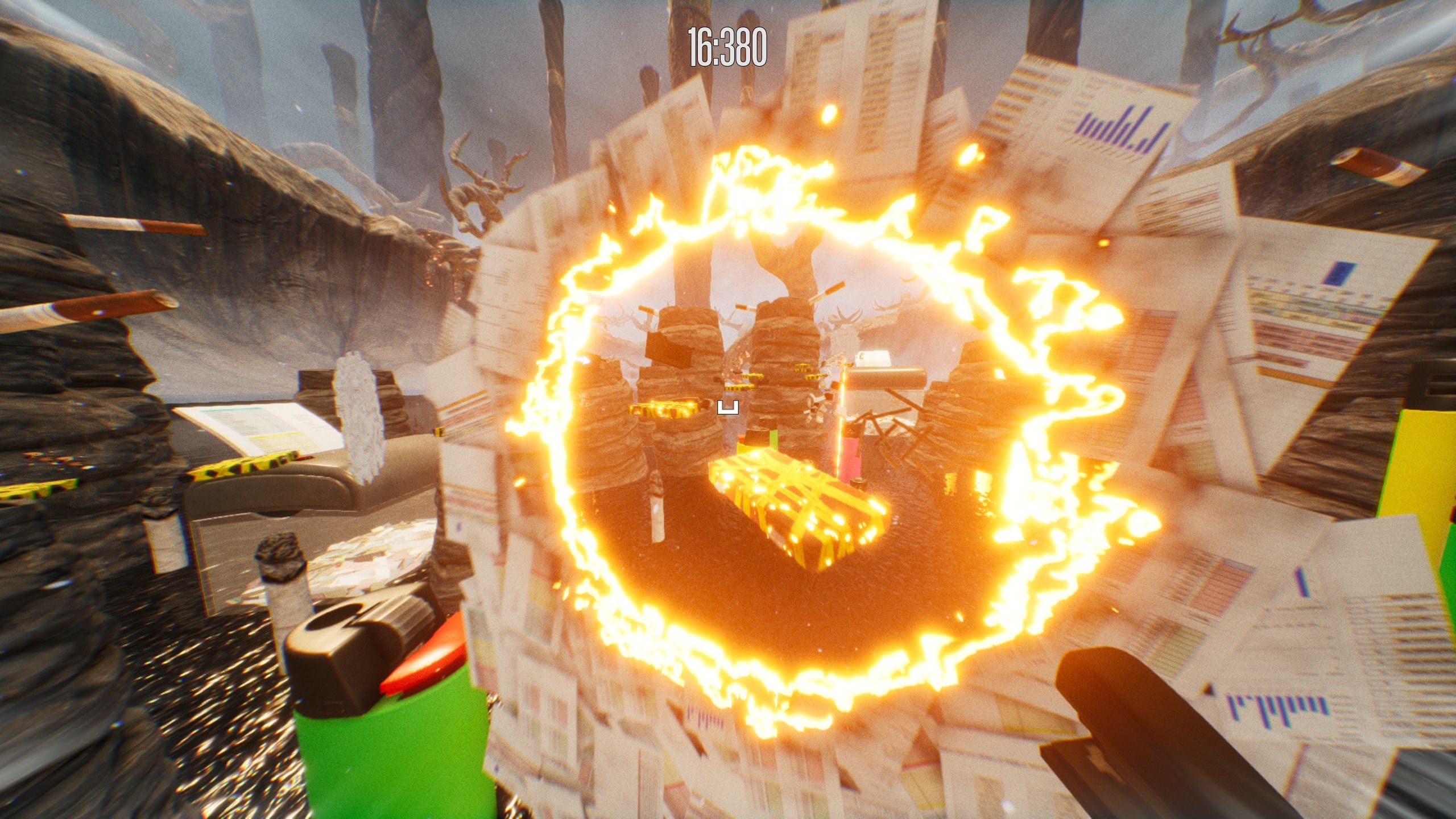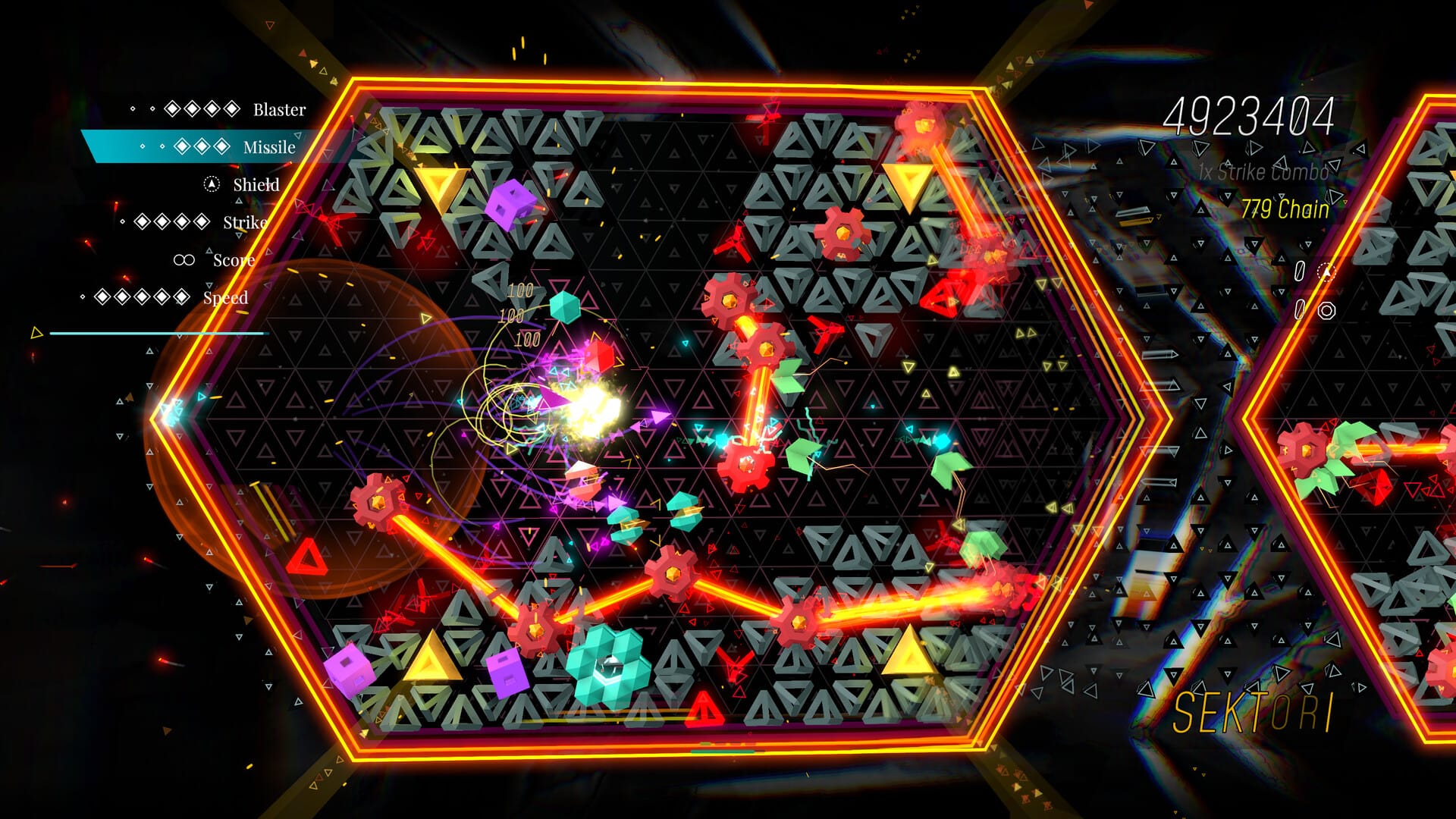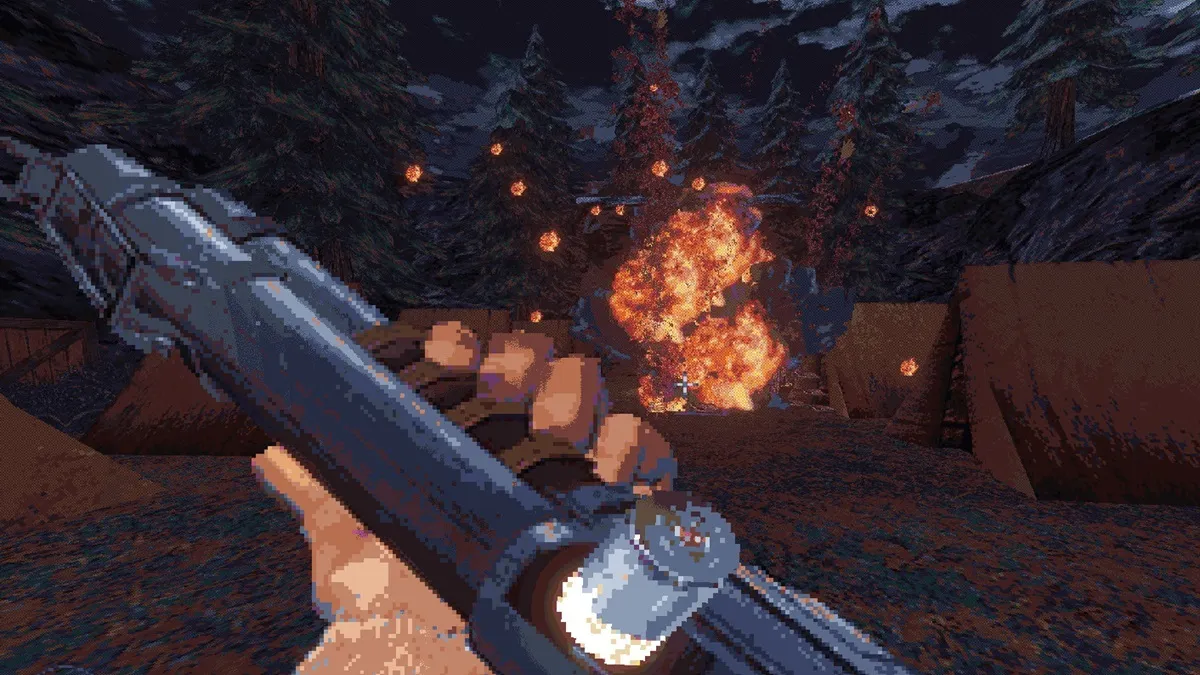Hell of an Office takes an old idea (what if working an office job was literally hell) and pairs it with a great speedrunning platformer. The pitch is you’re the new hire at HellO, a massive office complex situated in Hell itself, and are trying to find a way to escape the contract you signed and get back to the real world. The spaces between each proper office level are hazardous lava-ridden obstacle courses, however, which makes even the most simple tasks (picking up staples, delivering posters, etc) a much more difficult and daunting prospect.
It plays with the premise in the ways you’d expect. All the workers are the same featureless charcoal-black forms, almost all of them making jokes about office culture and the fact that they’re working in a literal hellhole. The office intermissions are quick enough to avoid the jokes becoming stale, though your mileage will vary depending on how much the core premise works for you.
It all serves as a good wrapper for a very good platformer, though. Hell of an Office is about dashing through quick levels before the rising lava tide engulfs you. You do this by using your magic stapler. The stapler handles all your movement abilities. You can air-dash and fire staples that explode, which act as a rocket jump of sorts (the only way you can jump). Eventually you can also grapple to clothes hangers and run along specific walls. The spread of abilities is simple, but Hell of an Office makes great use of them. Every set of ten levels introduces some new element. A couple early ones are wind tunnels that propel you forward and sometimes require a dash to escape and portals that carry your momentum forward.

The latter is notable because it greatly affects level routing. Games like this thrive on finding ways to optimize movement or discover shortcuts. Rocket jumps over a ton of potential for skipping large portions of levels since you can chain them for as long as you have a surface to bounce off of, but the portals complicate this by often keeping you locked to the expected path through a level. Not a bad thing, mind – it just means you have to really optimize every step or get supremely creative.
For the first half of the game, I was trying to optimize to the best of my ability. Often that meant trying to find very small ways to save time (usually tightening my execution to be near perfect) as a lot of attempts at shortcuts I thought of either weren’t that much faster or didn’t actually get me anywhere. By the second half, I’d decided to just focus on simply getting through the levels instead. In part because the increasing difficulty made it harder to even think of trying to improve my times (late-game levels throw a lot at you), but also because I couldn’t think of ways to do so.
Hell of an Office‘s levels largely feel very linear. There is a path through them and you need to figure out how to work within those confines. Rarely does the game give you clear opportunities for skips. On the one hand, it makes the process of replaying levels over and over straightforward since it merely boils down to perfecting your movement. On the other hand, it means that the process becomes more opaque because there’s nothing to suggest or hint at other routes apart from saying “do better.” It’s not like Neon White where a second run reveals something different you can try that opens up further time-saves, nor Phantom Spark with its ghosts to compete against and learn from. It relies instead on player ingenuity.

Whenever I had an idea that led to an actual time-save, it usually came about by looking at the surrounding geometry and wondering if I could use it somehow. Playing through the levels as expected is fun, but subverting them, finding routes that get you to the finish line faster than you thought possible, is one of the draws of these games. An early example let me effectively go around the back of the track to reach the exit far faster than I could by just running forward. It was far more difficult – every step had to be executed perfectly so I wouldn’t waste time floating in the air – but it was worth it because it worked. Because it was something I found just by looking at the surroundings. Those moments were few in my experience (I could have very well just missed a bunch of obvious tricks in most levels), but always so very satisfying.
But the main paths through each level are a good challenge as well. Even on stages that are very simple, getting through them quickly can still be tricky. I can’t count the number of times I had to restart because I mistimed a jump or a dash or ended up just a little bit short on momentum to reach the next platform. Hell of an Office makes every level a proper obstacle course, leveraging the high-speed movement well enough to make you slip up and catch you in its clutches just as often as it allows you to soar effortlessly. Even when I wasn’t feeling the drive to compete for better times, just getting through the levels was enough to keep me satisfied.
That’s a tricky balance to strike. When time trials are one of the draws of the game, that often becomes the thing I focus on. Phantom Spark was great because of how much it allowed me to revel in that sort of competition on a level I was comfortable with. Hell of an Office on the other hand is a good platformer first and foremost. That it does have that time trial aspect is just a welcome bonus as the core platforming and movement are strong enough to carry it.
Callum Rakestraw (he/him) is the Reviews Editor at Entertainium. You can find him on Bluesky, Mastodon, and his blog.





